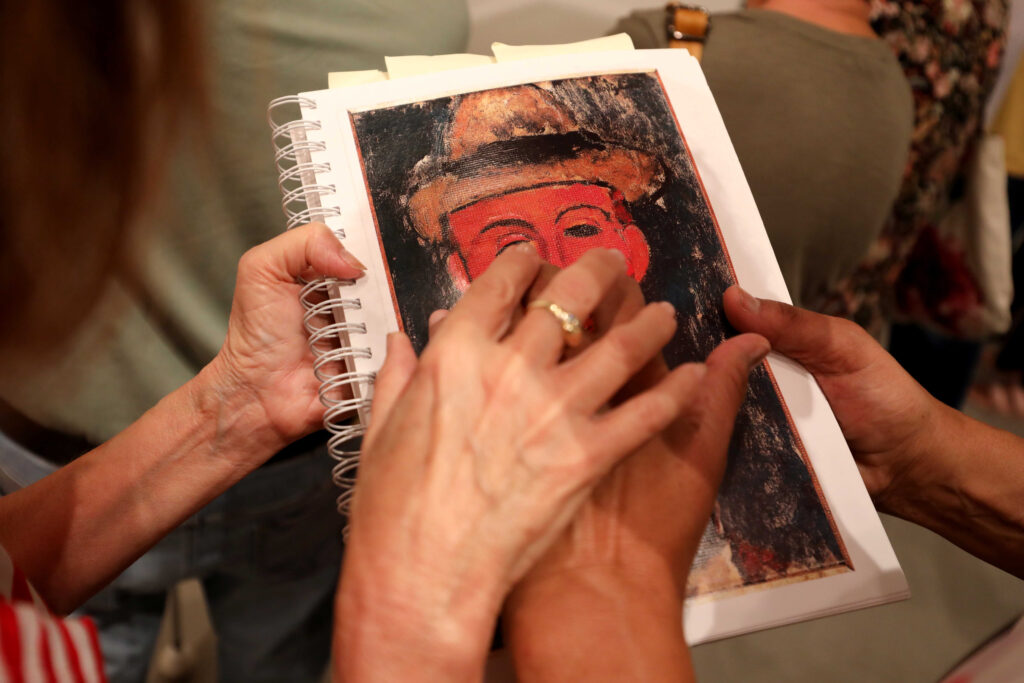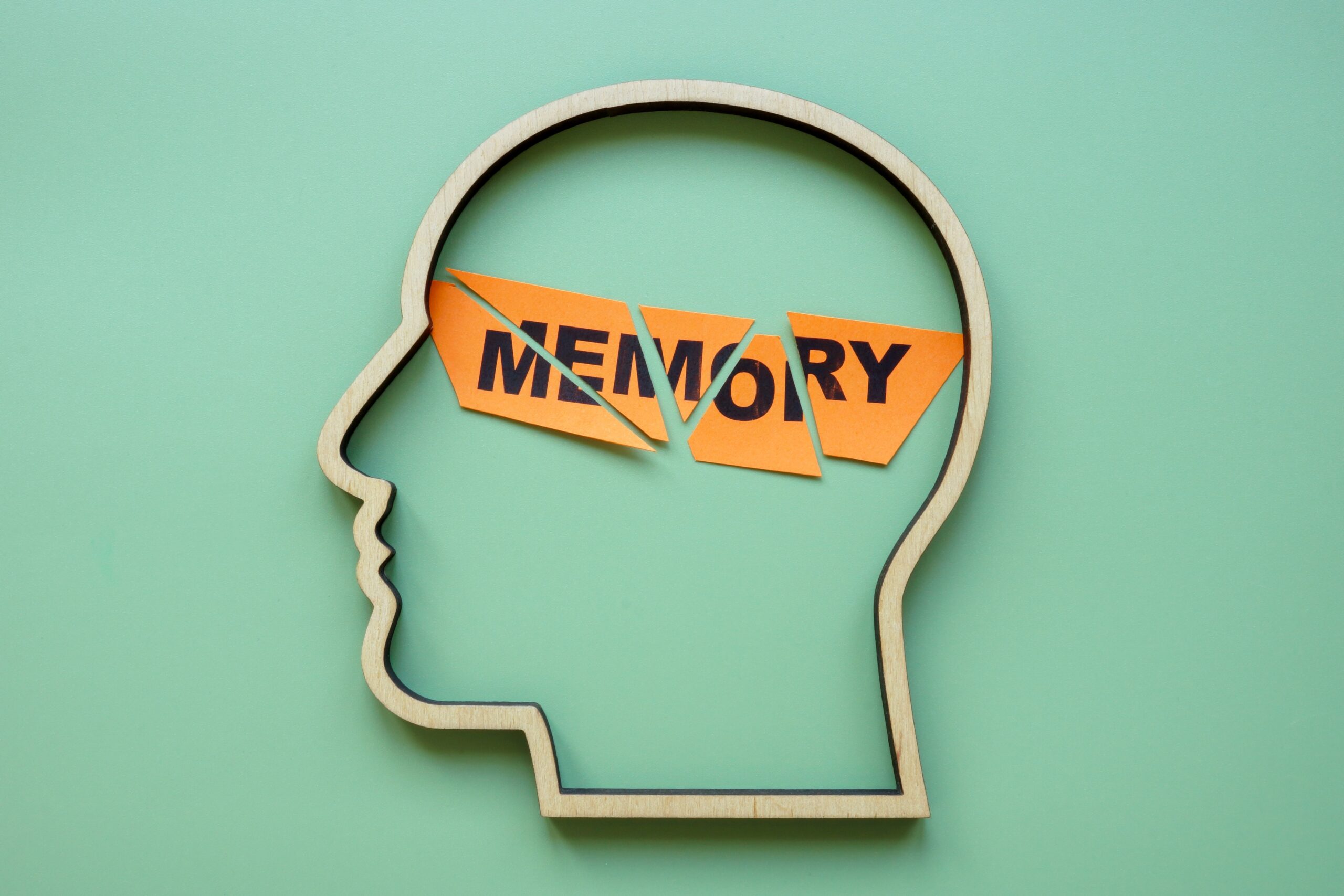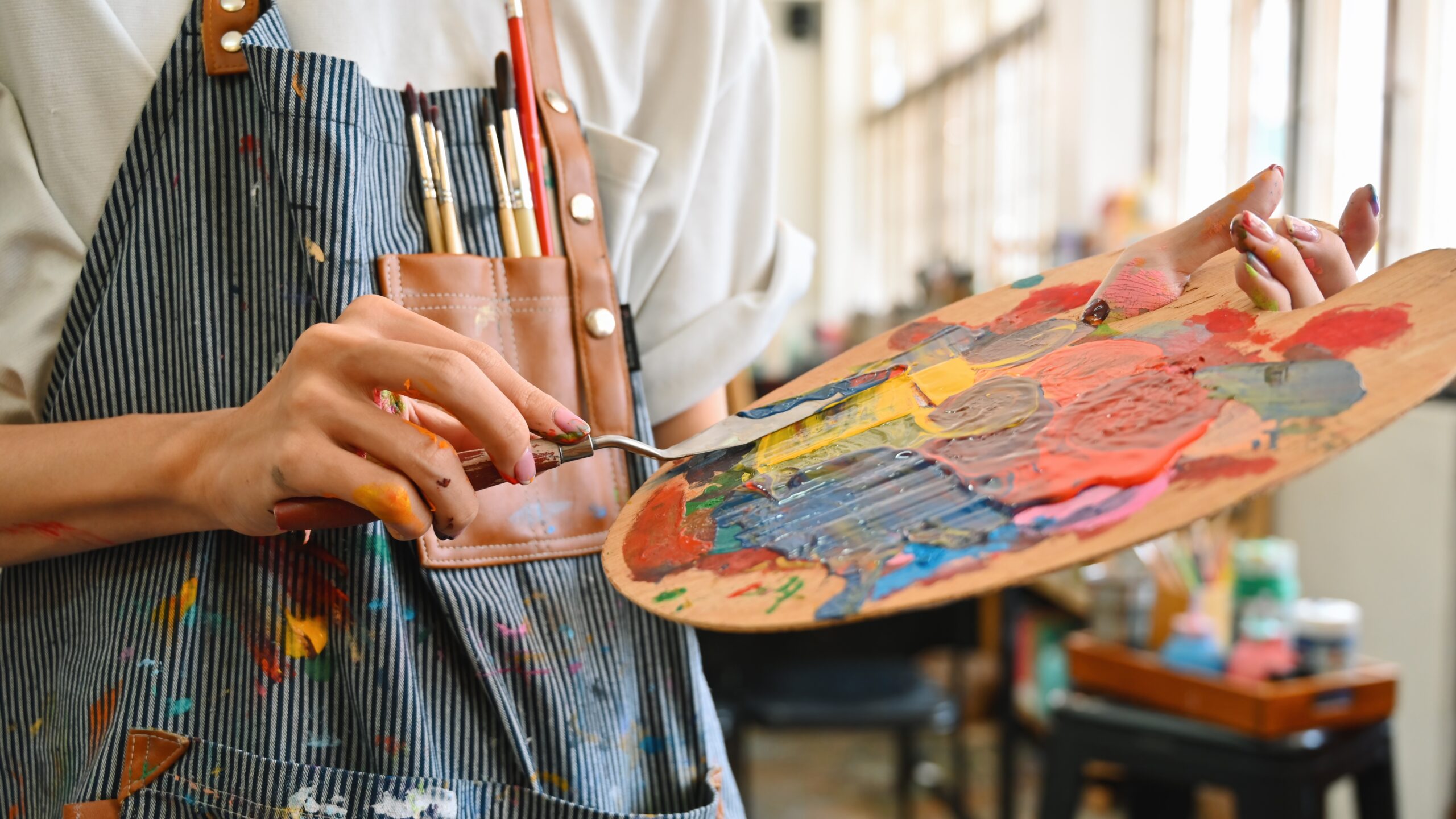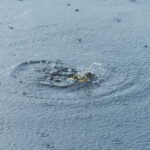How the brain builds beauty without sight.
Art is often described as a visual language—but what happens when the artist has never seen the world? Across the globe, blind and visually impaired painters are creating astonishing works of art, defying conventional ideas of what vision and imagination truly mean. Using touch, memory, texture, and emotion, these artists prove that beauty isn’t bound to sight—it’s born in the mind’s eye. In this article, we explore the lives and works of blind painters, how they create their art, and what neuroscience reveals about creativity without vision.
Outline
- Introduction
- Can You Create What You’ve Never Seen?
- Painting Without Sight: The Techniques of Blind Artists
- Meet the Artists
- Esref Armagan (Turkey)
- John Bramblitt (USA)
- Lisa Fittipaldi (USA)
- Sargy Mann (UK)
- How the Brain Rewires Itself After Vision Loss
- Sight vs Perception: The Inner Landscape
- Why Do Blind Artists Paint?
- The Role of Tactile Art and Accessible Materials
- Art Without Sight in History
- Final Thoughts
Introduction
Close your eyes. Now imagine painting a sunrise, a child’s face, or a bustling city street. For most of us, sight is inseparable from creativity. But for some, vision has never been part of the equation—and yet they create masterpieces.
Blind artists challenge everything we think we know about art. They don’t “see” in the traditional sense, but their minds build imagery in other ways—through touch, intuition, and memory.
Their art is not just possible. It’s powerful.
Can You Create What You’ve Never Seen?
The short answer: yes.
Vision is just one way to gather information about the world. The brain processes input from touch, sound, spatial awareness, and emotion—and can convert these into mental images.
For people born blind, imagination is based on non-visual experiences. For those who lost sight later in life, visual memory still plays a role.
And for both, the brain’s plasticity allows it to adapt and create a rich, internal world of form, colour, and structure—without physical sight.
Painting Without Sight: The Techniques of Blind Artists
Blind artists use a wide range of tools and techniques to replace visual input:
Tactile methods:
- Raised outlines using glue or puff paint
- Textured paints to differentiate colours by feel
- Touch guides on canvas to locate areas
- Using Braille-style grids to plot placement
Other strategies:
- Memory-based spatial planning
- Verbal feedback from sighted assistants
- Using emotion and sound as inspiration
Many blind painters develop a “mental map” of their canvas before even touching it—then build their artwork layer by layer, entirely by feel.

Meet the Artists
Esref Armagan – Turkey
Blind since birth, Armagan paints detailed landscapes, portraits, and architectural scenes. He uses a tactile method: first drawing outlines with raised lines, then applying colour with precision.
He’s been studied by neuroscientists, who were amazed that his brain shows visual cortex activation despite total blindness—suggesting he has built his own “internal vision.”
“I know what I want to paint in my mind before I start,” says Armagan. “I can see it inside.”
John Bramblitt – USA
Blinded in his early twenties due to complications from epilepsy, Bramblitt taught himself to paint by feeling the texture of each colour.
He developed a system where each colour is mixed to a distinct texture, so he can identify and apply them without sight.
His vibrant, emotionally charged portraits have been exhibited internationally, and he leads art workshops for the blind, proving that creativity has no limits.
Lisa Fittipaldi – USA
Lisa lost her sight suddenly in her 40s and began painting soon after, despite having no prior art training.
She memorises her compositions and uses touch-based reference points to maintain perspective and proportions.
Her paintings often depict daily life and still lifes, rich in warmth and emotion, capturing what she feels, not what she sees.
Sargy Mann – UK
Though not completely blind at first, Sargy gradually lost his sight due to cataracts and retinal disease.
He continued to paint by constructing cardboard models of his subjects and visualising them through touch and memory.
Even in complete blindness, he produced large-scale, colour-rich works, relying on his deep knowledge of light and composition.
“When I lost my sight, I found myself seeing more clearly than ever,” he said.
How the Brain Rewires Itself After Vision Loss
The brain is incredibly adaptable. When one sense is lost, others often become sharper—and the brain repurposes the visual cortex to help.
Neuroscientific findings:
- In blind individuals, the visual cortex still activates during tasks involving touch or spatial reasoning
- Neuroplasticity allows the brain to form new connections based on other sensory inputs
- Mental imagery in blind people is multisensory, not visual
This means that the blind do “see”—just in a way that science is only beginning to understand.
Sight vs Perception: The Inner Landscape
Vision and perception are not the same.
Sight is:
- The physical act of detecting light through the eyes
Perception is:
- The brain’s interpretation of sensory data
- Informed by touch, sound, memory, and intuition
Blind artists often describe their process as “translating feeling into form”, building scenes that may be emotionally truer than photorealism.
Their art is not constrained by what is seen, but shaped by what is understood.
Why Do Blind Artists Paint?
For many, art is not about representation—it’s about expression, independence, and connection.
Reasons include:
- Emotional expression
- Reclaiming a sense of control and identity
- Challenging stereotypes about blindness and creativity
- Finding joy and beauty through the act of creation
Blind artists don’t paint to prove a point—they paint because, like any artist, they feel something that needs to be said.
The Role of Tactile Art and Accessible Materials
A growing movement is making art more accessible to blind and visually impaired creators:
- Textured canvases and paints
- 3D-printed guides
- Audio-described galleries
- Tactile exhibitions where visitors can touch sculptures and textured paintings
- Workshops that focus on inclusive art education
By rethinking how we approach art tools and spaces, we open up the creative world to more kinds of minds.
Art Without Sight in History
Blind artists are not a new phenomenon:
- Homer, the ancient poet, was said to be blind—yet shaped epic stories of war and gods
- The Chinese brush painter Huang Gongwang continued to paint after losing much of his vision in old age
- Today, blind sculptors, musicians, and painters contribute to every artistic tradition—quietly challenging what it means to be a “visual” artist
Art has never belonged exclusively to the eyes.
Final Thoughts
Blind painters prove that creativity isn’t about what you can see. It’s about what you can feel, imagine, and express.
They remind us that beauty exists in more than just form and colour—it lives in memory, touch, emotion, and courage. Their work isn’t just art—it’s a different kind of vision, built not with the eyes, but with the whole being.
So the next time someone tells you art is only for the sighted, tell them this:
Some of the world’s clearest visions come from those who have never opened their eyes.








